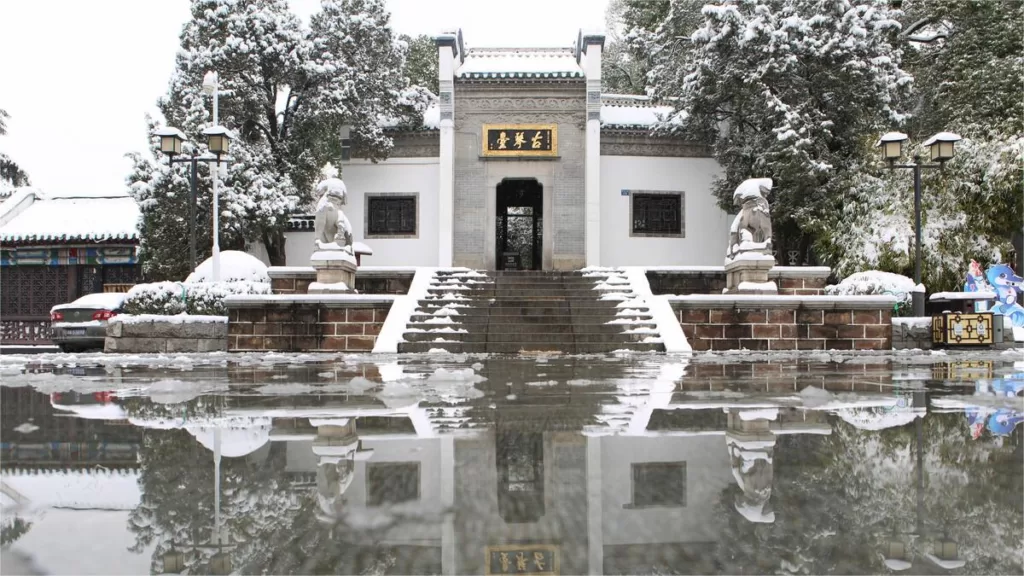武汉古琴台 - 票价、开放时间、交通和亮点


Guqin Tai (古琴台), also known as the Heptachord Terrace, is a historical site located in 武汉, China. Its origins can be traced back to the Northern Song Dynasty and was later rebuilt in the early years of the Qing Dynasty in 1796. This site holds significant cultural and historical importance, as it is associated with the legendary meeting between two renowned figures in Chinese history, Yu Boya and Zhong Ziqi. Guqin Tai is often mentioned in the same breath as other famous landmarks in Wuhan, including the 黄鹤楼 和 Qingchuan Pavilion, collectively known as the “Three Scenic Wonders of Chu.”
基本信息
| 预计游览时间 | 1 小时 |
| 票价 | 免费 |
| 开放时间 | 8:30 - 17:00;最后入场时间:16:30 |
| 电话号码 | 0086-027-84834187 |
地点和交通
Guqin Tai is located at the western foothills of Gui Mountain, along the shores of Yue Lake, in the Hanyang District of Wuhan, Hubei Province, China. The specific address is 10 Hanyang Qintai Avenue.
To get there, tourists can take bus 24, 42, 61, 524, 558, 585, 608, 704, 705, or 707 and get off at Yinwu Avenue Qintai Park Stop (鹦鹉大道琴台公园站).
Lengend of Boya and Ziqi

Legend has it that during the Spring and Autumn Period (Over 2000 years ago), Boya, a skilled guqin player from the state of Chu, came to this location on a business trip and expressed his emotions through music. On the nearby mountain, a woodcutter named Ziqi was able to discern the nuances of Boya’s music and understand his aspirations for lofty mountains and flowing waters. A deep friendship thus formed between Boya and Ziqi, and they made a pact to reunite at this place one year later. Tragically, when Boya returned as promised, he learned that Ziqi had passed away due to illness. Grief-stricken, Boya shattered his guqin and never played it again for the rest of his life. In honor of their profound friendship, subsequent generations built Guqin Tai to commemorate this touching story.
Highlights of the Terrace

The Boya Terrace is a square stone platform crafted from white marble, symbolizing the spot where Boya played his guqin. It stands at a height of 1.75 meters and features a square stele in the center bearing the inscription “琴台” (Qin Tai), which is believed to have been written by the Northern Song calligrapher Mi Fu. The stone platform is enclosed by stone railings inscribed with bas-reliefs that depict the moment Boya shattered his guqin, a relic from the Qing Dynasty. This terrace is often referred to as the “Number One Terrace for Kindred Spirits in the World.”

In addition to the Boya Terrace, the park boasts several other notable attractions, including the “Yinxin Stone House,” an edifice with inscriptions personally penned by Emperor Dao Guang of the Qing Dynasty, and a marble statue of “Boya Playing the Qin.” The park also features a modern water pavilion and a long corridor. There are various inscriptions and steles, such as the “Inscription on the Qin Terrace of Hanshang” and “A Study of the Boya Story.” Among them is the poem “Inscription on the Qin Terrace” by the Qing Dynasty calligrapher Song Xiang, a literary gem with significant artistic and calligraphic value. Guqin Tai stands as a testament to the enduring legacy of this poignant story, attracting visitors who wish to immerse themselves in the rich cultural heritage of Wuhan.
Vlog about Guqin Tai
Attractions near Guqin Terrace

Iron Gate Pass – A strategic pass over 2000 years ago

武汉琴台大剧院 - 文化中心

武汉动物园 - 丰富的动植物资源

张之洞与现代工业博物馆

大禹神话公园 - 有关大禹的故事和传说

晴川桥 - 彩虹桥

归元寺 - 两面观音像

汉正街--物美价廉的小商品

武汉中华奇石馆--地球地质奇观的见证